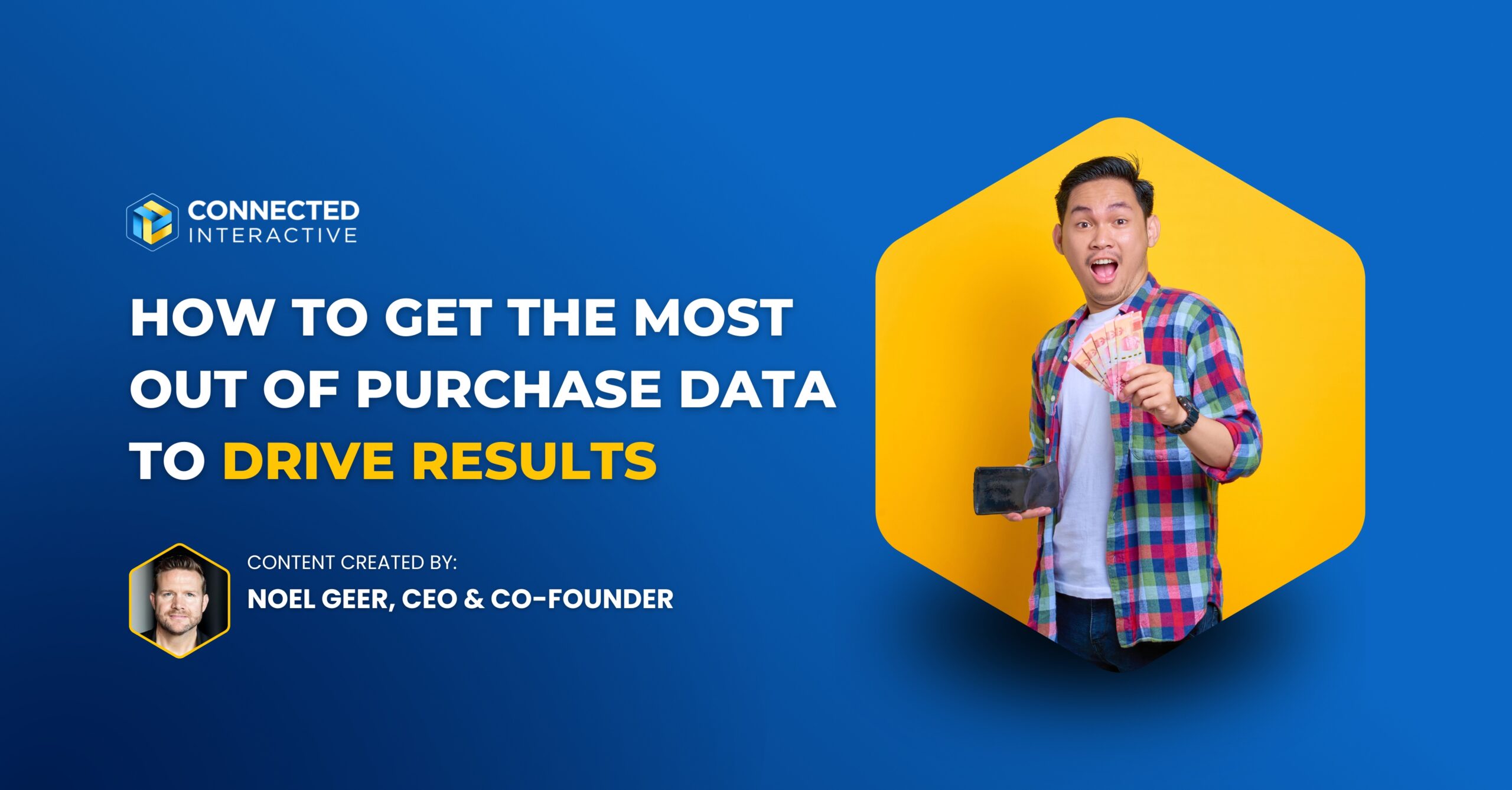UNLOCKING THE POWER OF PURCHASE DATA FOR ADVERTISING
Hello everyone, Noel Geer here, CEO of Connected Interactive. After 25 years in the advertising industry, I’ve embarked on a mission to share my knowledge and insights with you. Today, I want to talk about one of the most powerful tools in digital advertising: purchase data. Let me take you on a journey of how to effectively use third-party purchase data to transform your advertising strategy and drive results.

My Journey with Purchase Data
Have you considered or tried using third-party purchase data to increase the profitability of your advertising? Over the years, I’ve heard countless clients and partners express how crucial purchase data could be in driving their advertising results. It’s taken a good decade to figure this out for the Canadian market—not just obtaining the data, but also learning how to properly use it.
Today, we’ve developed a database of consumer spending that accounts for around 40% of card purchases in Canada, excluding cash transactions. We use a process called Audience Architecture, blending this transactional data with other consumer behaviors to create precise audiences for digital ad targeting.
The Early Days
Back in 2014, my obsession with purchase data began. We were deep into the mobile space, building software for mobile apps to help clients understand mobile behavior and track retail visits. But I kept thinking, if we could get the purchase data across multiple stores, we could complete the loop.
Then, Mastercard came along, trying to figure out how to sell their credit card data in Canada to marketers. They couldn’t do it the same way as in the US, so we stepped up. Fast forward nearly a decade, and we’re now working with credit card, debit card and even mobile payment data from over 350,000 POS terminals with Moneris, covering about 40% of card transactions in the country. We’ve been testing and experimenting with purchase data for years, and we’ve finally cracked the code on how to use it effectively for digital advertising.
The Benefits of Purchase Data: A Goldmine for Advertisers
Using purchase data can transform your advertising strategy. Imagine targeting the top 25% of buyers in your category—those most likely to convert and bring in the highest return. Studies have shown that this can increase the profitability of your ad spend 100-fold over time. But here’s the catch: this isn’t intent or low-funnel data. You need to approach it properly to reap the benefits.

Sage Advice
Here’s how purchase data can help you move the needle, and how to properly measure and implement it:
- Increase Your Marketing Profitability: Identify the people who spend the most or most often in your category. Imagine spending 80% of your budget on the 20% of consumers who provide a higher return on investment. However, remember that it won’t cost less to acquire them, and they won’t necessarily convert right away. Use purchase data to drive more valuable engaged customers, filling your funnel with high-paying users who will increase profitability over time.
- The Power of First-Party Data: While third-party purchase data is super valuable, first-party data helps make informed decisions. Often, there isn’t enough first-party data to power a full strategy, but it can guide how to utilize third-party data for greater scale.
- Why Offline Purchase Data is Important: In Canada, offline purchases still account for over 80% of retail transactions. Privacy compliance means purchase data must be stored based on households at the 6-digit postal code level and the only way to target at that level is via lat longs mapped to the households. We’ve mapped over 40 million mobile devices to households to ensure precise targeting while taking advantage of a vast amount of offline data points. This data can also be integrated with online contextual data to drive even more power combining online and offline behaviours.
Final Thoughts
After nearly a decade of experimenting and testing with purchase data, we’ve found success by blending it with other data points through a process we call Audience Architecture. This process has received amazing feedback from some major brands and we’re only getting started 😁.
Here’s to your success in making the most out of purchase data. I hope you found this helpful and insightful. If you did, please share it so others can benefit from this knowledge. Let’s help ensure everyone has access to the information they need to succeed in digital advertising.









